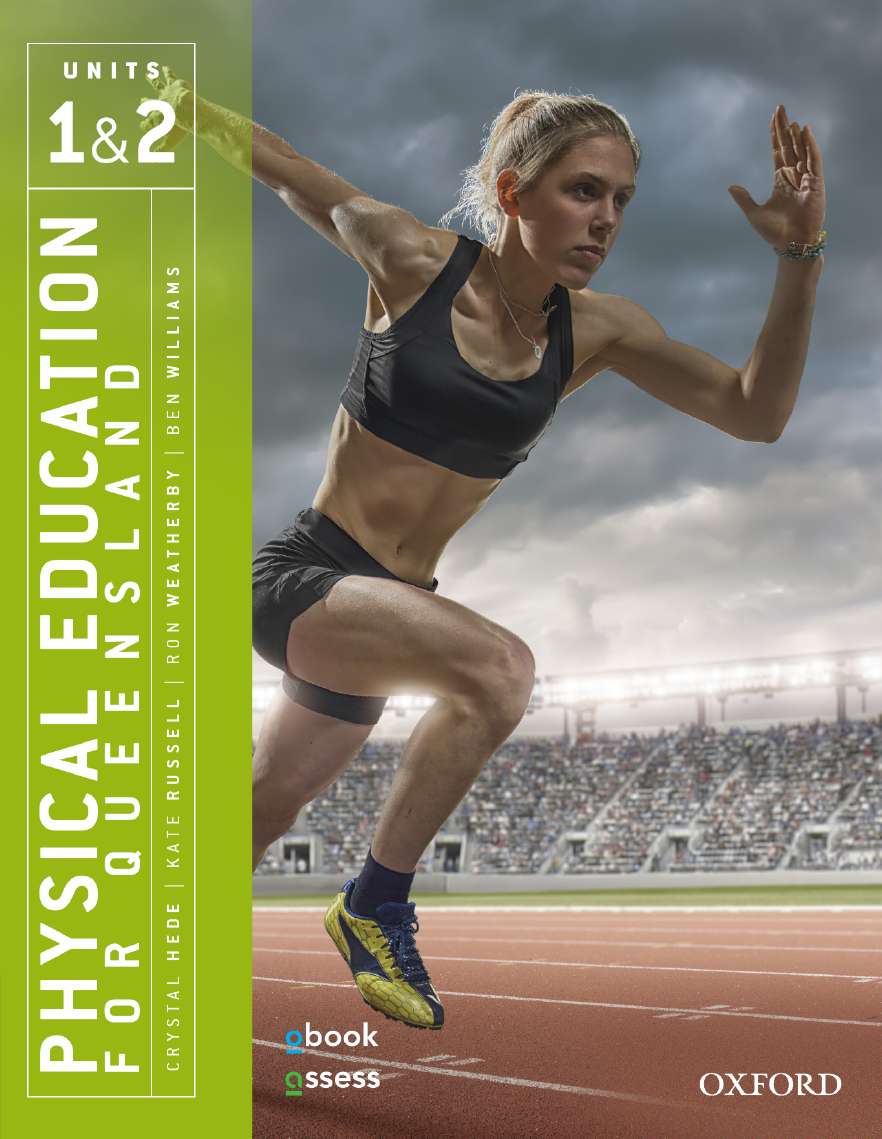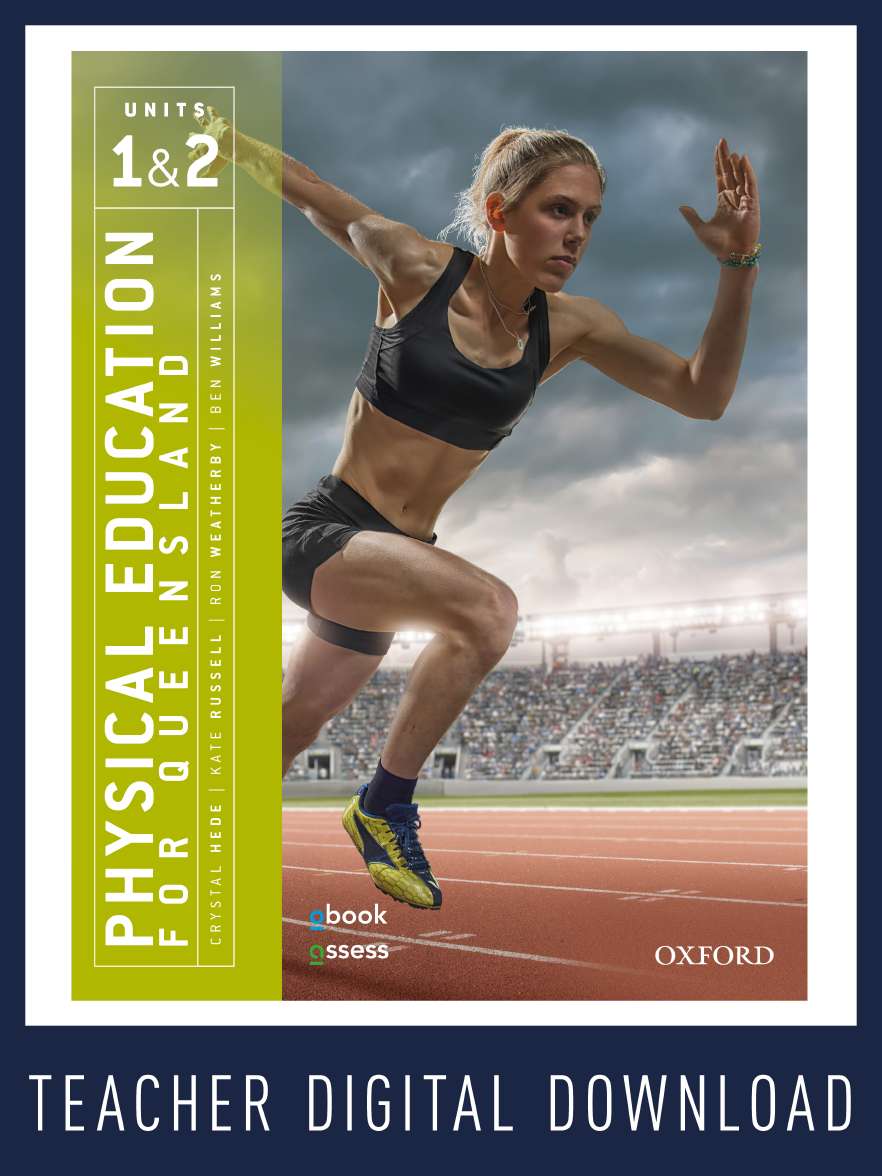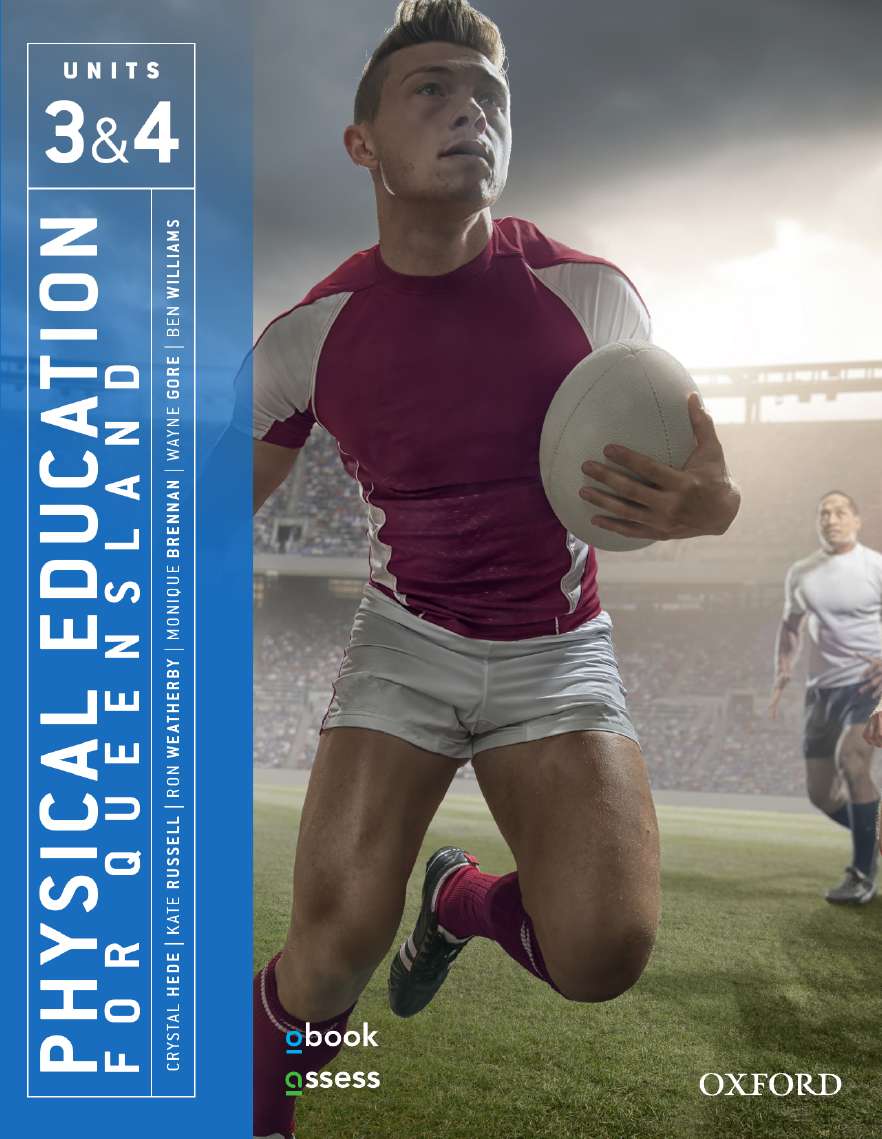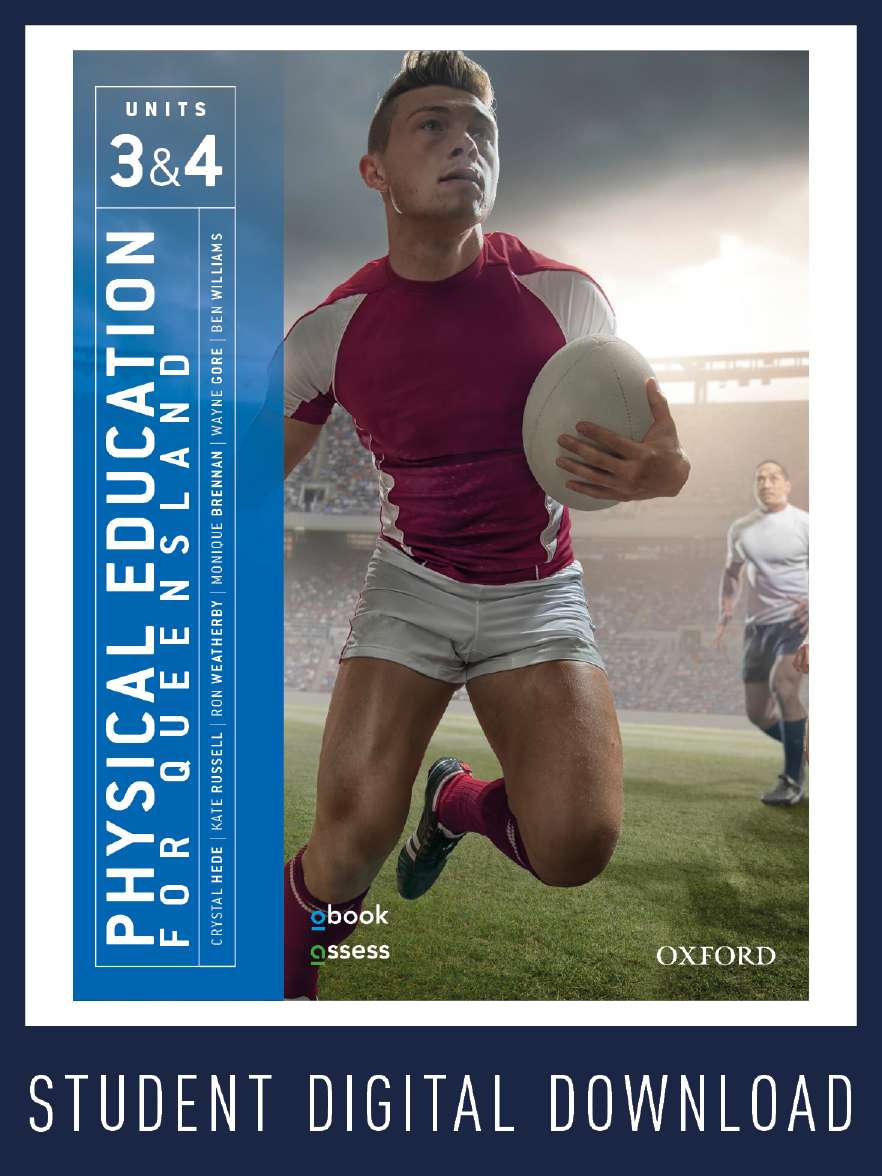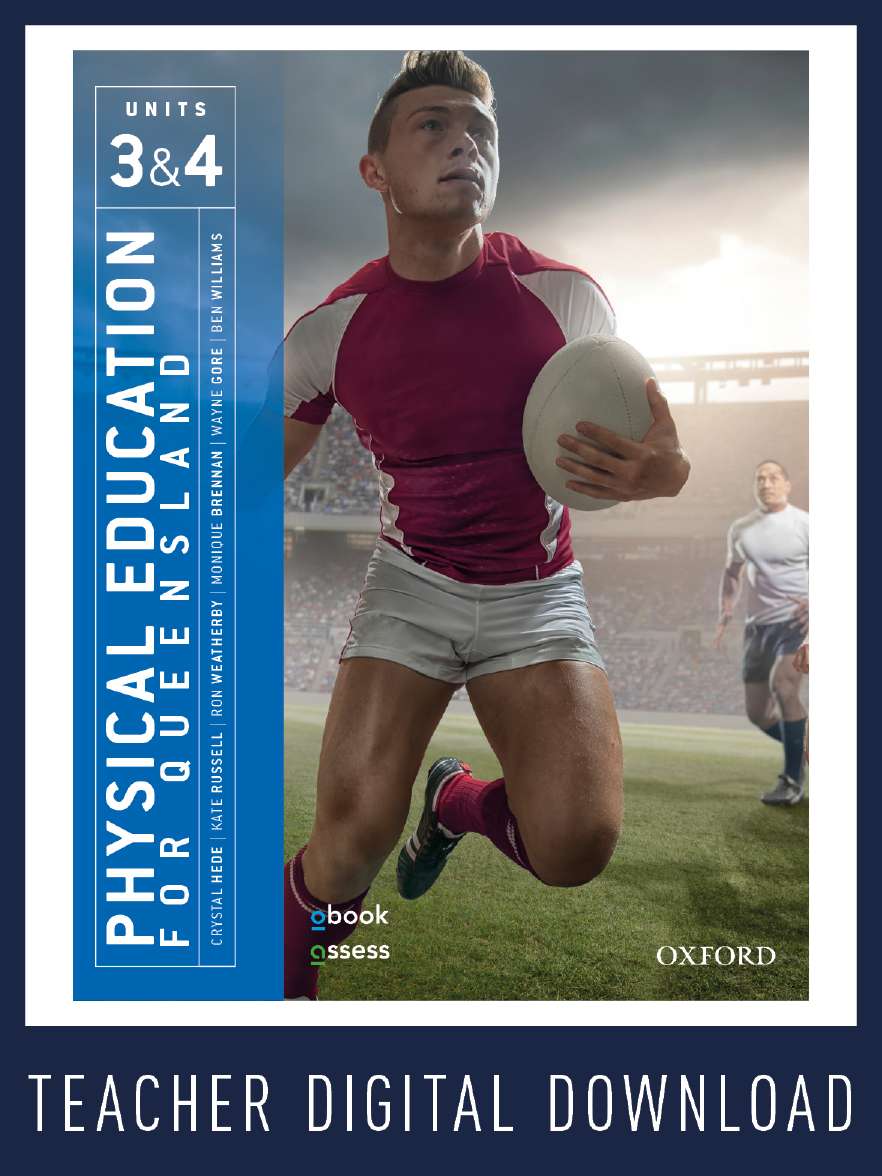Physical Education for Queensland Units 1&2 2E obook assess
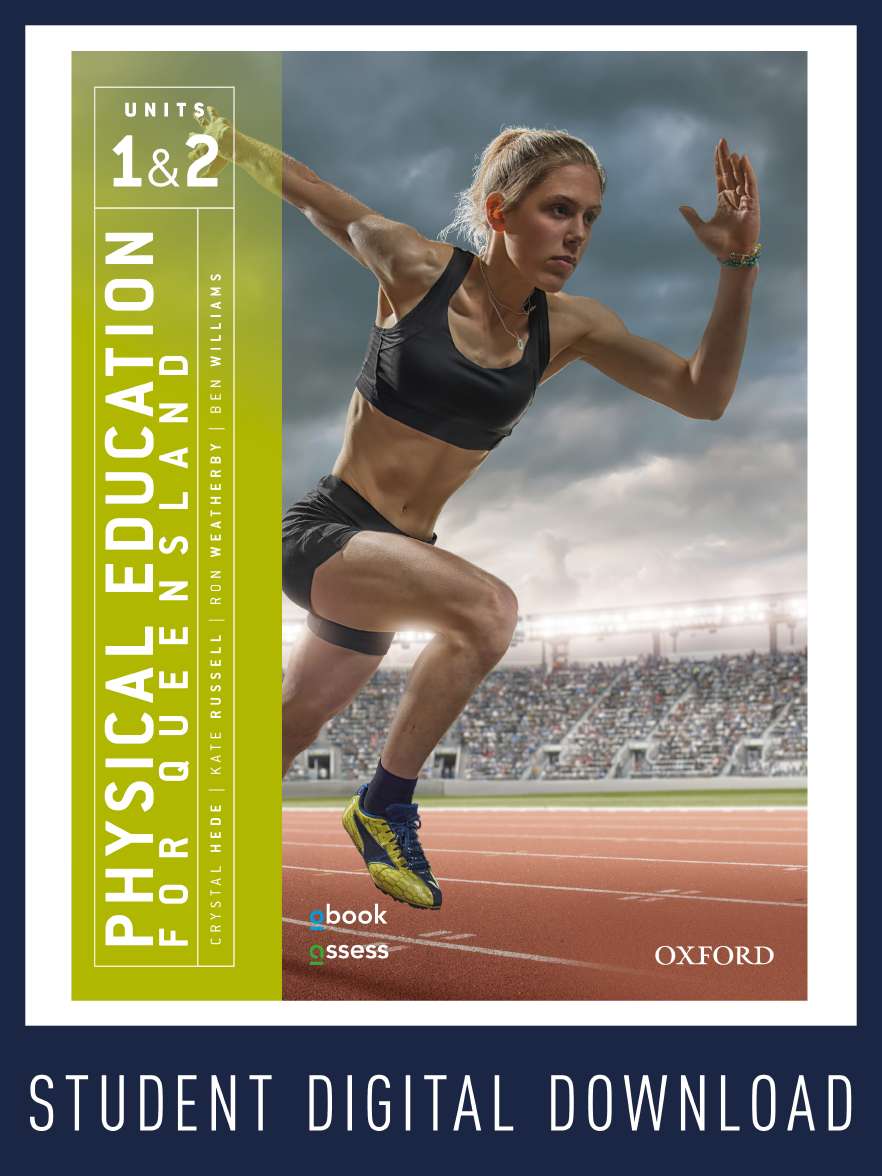
Physical Education for Queensland Units 1&2 2E obook assess
|
ISBN: |
9780190313203 |
|
Binding: |
obook code (digital) |
|
Published: |
15 Jan 2019 |
|
Availability: |
Available
|
|
Series: |
$52.95 AUD
$60.99 NZD
Add To CartDescription
obook assess is a cloud-based obook that students can use anywhere, anytime, on any device.
With obook assess, students can:
- access their Student book
- access rich, interactive content
- access work assigned by their teacher: reading, homework, tests and assignments.
Your Physical Education for Queensland Units 1 & 2 obook provides access to:
- a complete digital version of the Student book with added note-taking and bookmarking functionality
- free Oxford Concise Dictionary look-up feature
- targeted instructional videos by some of Queensland’s most experienced Physical Education teachers, designed to help students prepare for assessment tasks and exams
- a range of engaging worksheets for every chapter, designed to consolidate and extend understanding of key content from the syllabus
- additional case studies and opportunities for extension
- a range of interactive, auto-correcting, multiple-choice assess quiz questions.
obook assess is available with the printed Student book or as a digital download.
Contents
Chapter 1: Physical Education toolkit
1.1 Course overview for QCE Physical Education
1.2 Assessment overview for QCE Physical Education
1.2A Tips for success on the Project – folio
1.2B Tips for success on the Investigation – report
1.2C Tips for success on the Examination – combination response
1.2D Understanding cognitive verbs
1.3 The importance of data in QCE Physical Education
1.3A Putting data to use in Physical Education
1.4 Careers in physical education, sport and fitness
UNIT 1: MOTOR LEARNING, FUNCTIONAL ANATOMY, BIOMECHANICS AND PHYSICAL ACTIVITY
Chapter 2: Motor learning
2.1 Introduction to motor learning
2.2 Motor skills
2.3 The cognitive systems approach to motor learning
2.4 The dynamics systems approach to motor learning
2.5 Types of practice
2.6 Types of feedback
2.7 Body and movement concepts
Chapter 2 review
Chapter 3: Functional anatomy and biomechanics
3.1 Introduction tro functional anatomy
3.2 The structure and function of bones
3.3 The structure and function of joints
3.4 The structure and function of muscles
3.5 Introduction to biomechanics
3.6 Force
3.7 Force production
3.8 Motion
3.9 Newton’s laws of motion
3.10 Projectile motion
3.11 Balance and stability
3.12 Levers
3.13 Bernoulli’s principle
3.14 Analysing specialised movement sequences
Chapter 3 review
UNIT 2: SPORT PSYCHOLOGY, EQUITY AND PHYSICAL ACTIVITY
Chapter 4: Sport psychology
4.1 Introduction to sport psychology
4.2 Motivation
4.3 Confidence
4.4 Arousal
4.5 Attention and concentration
4.6 Team dynamics and cohesion
4.7 Psychological techniques to optimise performance
4.8 Goal setting
4.9 Mental rehearsal
4.10 Affirmations
4.11 Team dynamics and cohesion techniques
4.12 Pre-competition routines
4.13 Relaxation and energiser techniques
4.14 Positive self-talk techniques
4.15 Pre-task routines
4.16 Breathing techniques
4.17 Performance segmenting
Chapter 4 review
Chapter 5: Equity – barriers and enablers
5.1 Introduction to equity in physical activity
5.2 Personal factors that influence equity and access
5.2A Motivation
5.2B Confidence
5.2C Personality traits
5.2D Personal ability
5.2E Genetic disposition
5.2F Gender
5.2G Previous experiences of physical activity
5.3 Social factors that influence equity and access
5.3A Agents of socialisation
5.3B The social construction of gender
5.3C Diversity
5.3D Physical activity preferences
5.4 Cultural factors that influence equity and access
5.4A Demographic, generational and cultural change
5.4B Government funding
5.4C Mass media promotion and marketing of physical activity
5.4D Institutional rules, policies and procedures
5.5 Environmental factors that influence equity and access
5.5A Built and natural environments
5.5B Green space
5.6 Emerging megatrends in physical activity in Australia
Chapter 5 review
Chapter 6: Skill drills
1.2A Planning, creating and presenting a Project – folio [ONLINE ONLY]
1.2B Creating and presenting an Investigation – report [ONLINE ONLY]
1.2C Strategies for improving your results on the Examination –combination response [ONLINE ONLY]
1.3A Capturing and analysing video footage of physical performances [ONLINE ONLY]
1.3B Conducting a survey and presenting the results [ONLINE ONLY]
1.3C Using the internet to find relevant, credible and reliable sources [ONLINE ONLY]
2.4 Assess the impact of rate limiters on performance
2.5 Investigate the impact of types of practice on performance
2.6 Evaluate the impact of different types of feedback on performance
2.7 Investigate how body and movement concepts can be used to assess and improve performance
3.3 Evaluate the impact of joint movement on optimal physical performance
3.7 Evaluate the impact of summation of forces on force production
3.11 Evaluate the impact of base of support on quality of movement
3.12 Compare the effectiveness of levers in the production of speed in sport
4.4 Evaluate the impact of arousal on performance
4.6 Assess the impact of team cohesion on performance
4.9 Assess the impact of mental rehearsal on performance
4.15 Determine the impact of pre-task routines on performance
5.1 Implement an equity strategy in your PE class
5.3B Investigate the impact of the social construction of gender
5.3C Analyse the role of social factors on access
Glossary
Index
Authors
Crystal Hede
Crystal Hede has been the Head of Health and Physical Education at The Glennie School for over 10 years. She has lead curriculum change and held the position of IT mentor, supporting the broader staff body in the implementation of technology to enhance teaching and learning. She has also been a district panellist for senior Physical Education.
Kate Russell
Kate Russell has taught Health and Physical Education in Queensland for 14 years, including as Head of Department at St Saviour’s College. As a district review panellist, Kate has contributed to the development of the Physical Education syllabus over many years. Kate now specialises in the field of child behaviour, psychology and development, working to help parents and educators build positive relationships with the children in their care.
Ron Weatherby
Ron Weatherby has been a Health and Physical Education teacher for over 30 years and has been Head of Department at Lockyer District State High since 1997. Ron has been involved with senior Physical Education curriculum development at all levels since 1995, acting as a panellist, district review panel chair and state member over this time. Ron was also a member of the review panel for the new senior Physical Education syllabus and is currently presenting at workshops and developing resources for its implementation in 2019.
Ben Williams
Ben Williams is a Lecturer in Health and Physical Education in the School of Education and Professional Studies at Griffith University. He is a member of the QCAA's state review panel and has been a member of many health and physical education industry advisory panels. He is also President of the Australian Council for Health, Physical Education and Recreation's Queensland Branch (ACHPER QLD). Before completing his PhD and joining Griffith University, Ben was a Health and Physical Education teacher at The Gap State High School.
